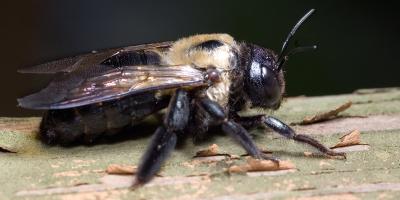Scratching in the Attic! Now What?

First you hear a scritch… then a scratch… next thing you know, you’ve got critters in the attic.
Don’t worry, it’s not uncommon—especially in New England, where the attics of both historic homes and new construction can wind up being a haven for creatures of every sort.
Attics make a perfect abode for all different types of creatures, from the ones that scurry to those that soar.
A well-constructed attic is designed with good ventilation, so the dead heat of summer or the intense winter chill doesn’t turn it into an oven nor an icebox. Ventilation means openings, and openings are invitations to wildlife.
Top Five Attic Dwellers
There are five different types of critters that like to nest in New England attics, each with their own telltale signs of occupancy.
Bats—You probably don’t have a bell tower above your home, but the old expression “bats in the belfry” has its origins in a simple truth: Bats love the cozy warmth and cubby spaces that belfrys, attics, and crawl spaces have in common. Bats communicate and navigate using high-pitched squeals. That, combined with a rapid fluttering sound, usually lets you know the culprits behind those brown-stained holes in your shingles are bats.
Rats— Some rodents -- even rats -- can make cute pets when they’re immunized and domesticated, but the feral variety carry enough diseases to start a plague. Literally—the bubonic plague was transmitted to humans via a flea carried around by rats. In order to get into attics, rodents must travel up the interior of your walls. If you hear shuffling inside your walls as well as overhead, you may be dealing with rats. Keep in mind that rats are nocturnal creatures, so listen closely for these clues as soon as the sun goes down.
Mice—Like the shuffling of rats, pay close attention to any nighttime scurrying noises but especially squeaking or chirping sounds. In order to communicate, mice rely on a series of squeaks and chirps, which can clue you in to an infestation. Research shows that rats send messages similarly, but at pitches people are unable to hear.
Squirrels—Bigger and stronger, but also a little slower than their chipmunk cousins, squirrels make much more of a racket than their other rodent relatives, rats and mice. However, it’s important that you pay close attention to when you actually hear said racket. You can determine the type of squirrel depending on whether the activity occurs during the day or night. Grey and red squirrels, for example, will be active during the day; flying squirrels are nocturnal, therefore only heard at night. In either case, the damage squirrels can do with their oversized chompers is far more noticeable—and more costly to repair than their rodent counterparts.
Racoons—Finally, the heavyweight champion of attic dwelling. Racoons are nocturnal animals that love to climb trees and wiggle into attic spaces. Once there, they are prone to shredding insulation, gnawing on electrical wires, and shrieking like banshees while they wreak their havoc. Often growing as large as some dog breeds, racoons can be vicious when confronted.
Follow the Clues
If you poke your head up there and are lucky enough to see what’s invaded your attic, you’re already five steps ahead. If you haven’t seen and still don’t know who your upstairs neighbors are, simply follow these four clues:
Clue 1: Type of Noise—First, what are you hearing? Fluttering during the day can be birds. At night, bats. Scurrying during the day? Squirrels. Loud, heavy, slow movement at night? Racoons. Fast-paced movement at night that also goes up and down the walls? Mice or rats. Can’t tell whether you’re dealing with mice or squirrels? Try out the call and response test. Simply bang on the wall wherever you hear the noise: if the noise stops, you’ve got mice; if it continues, squirrels.
Clue 2: Type of Entry Hole—Second, how did they get in? Walk around the house and look for damage around vents and eves. If you discover a small hole with teeth marks, it’s probably a squirrel. Small gaps with a greasy brown stain around them? Mice or rats. Does it look like someone just ripped a big hole in your shingles? Only racoons have the strength to do that kind of damage.
Clue 3: Type of Feces—Wherever animals go, they… go. Look for the unmistakable calling card every creature leaves behind. Racoons, of course, have the biggest poop. Mice, rats and squirrels all leave little pellets of increasing size appropriate for the sized critter that left them. Bats drop more elongated pellets, usually into piles, and their excrement is wetter and smears more easily. Comparatively, if you’ve ever owned a car, you probably know what bird feces look like... especially after a car wash.
Clue 4: Other Damage—Chewed up electrical wires point to rodents and racoons. Racoons can also rip apart ductwork and insulation. Squirrels like to bring in plant debris, and birds like to build nests.
Eviction Procedures
As soon as you discover any of these unwelcome tenants in your attic, you need to determine a plan to get them out -- immediately. Wild animals carry diseases and quickly destroy properties. If it’s nearing winter and the tenant turns out to be bats, you have to be mindful of roosting season, when they settle in to hibernate. Disrupting bats during roosting season can prove fatal to these creatures, which is why at JP Pest Services, we insist on exclusion procedures well ahead of roosting season.
Regardless of who has taken up roots in your attic, it is important to address the issue as quickly as possible to minimize the cost of property damage and the risk of the spread of associated diseases. In most cases, professional exclusion is necessary for a safe and effective removal of any uncivilized houseguests.
Request a free quote for professional wildlife control in order to rid your home from pests of all shapes and sizes.



